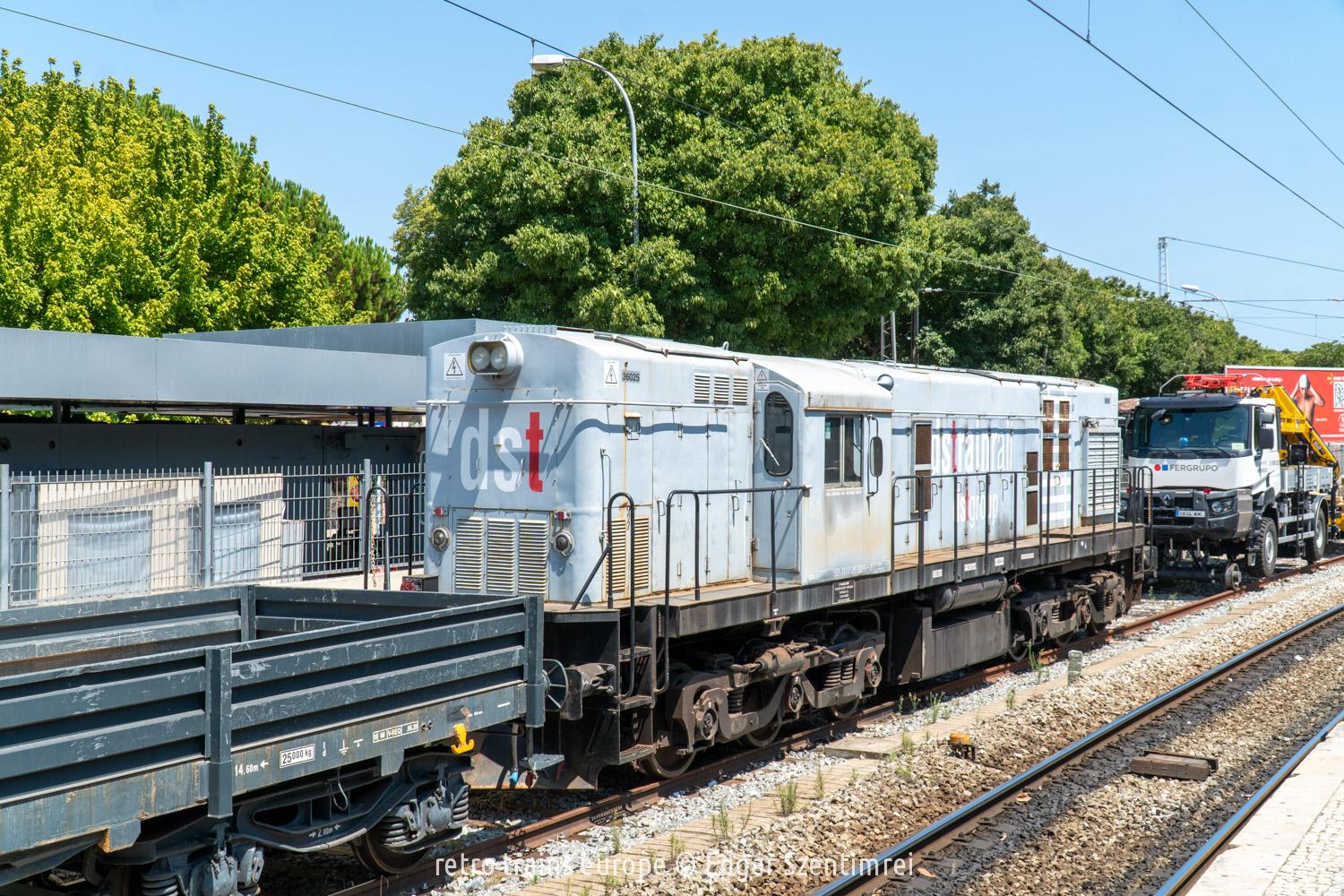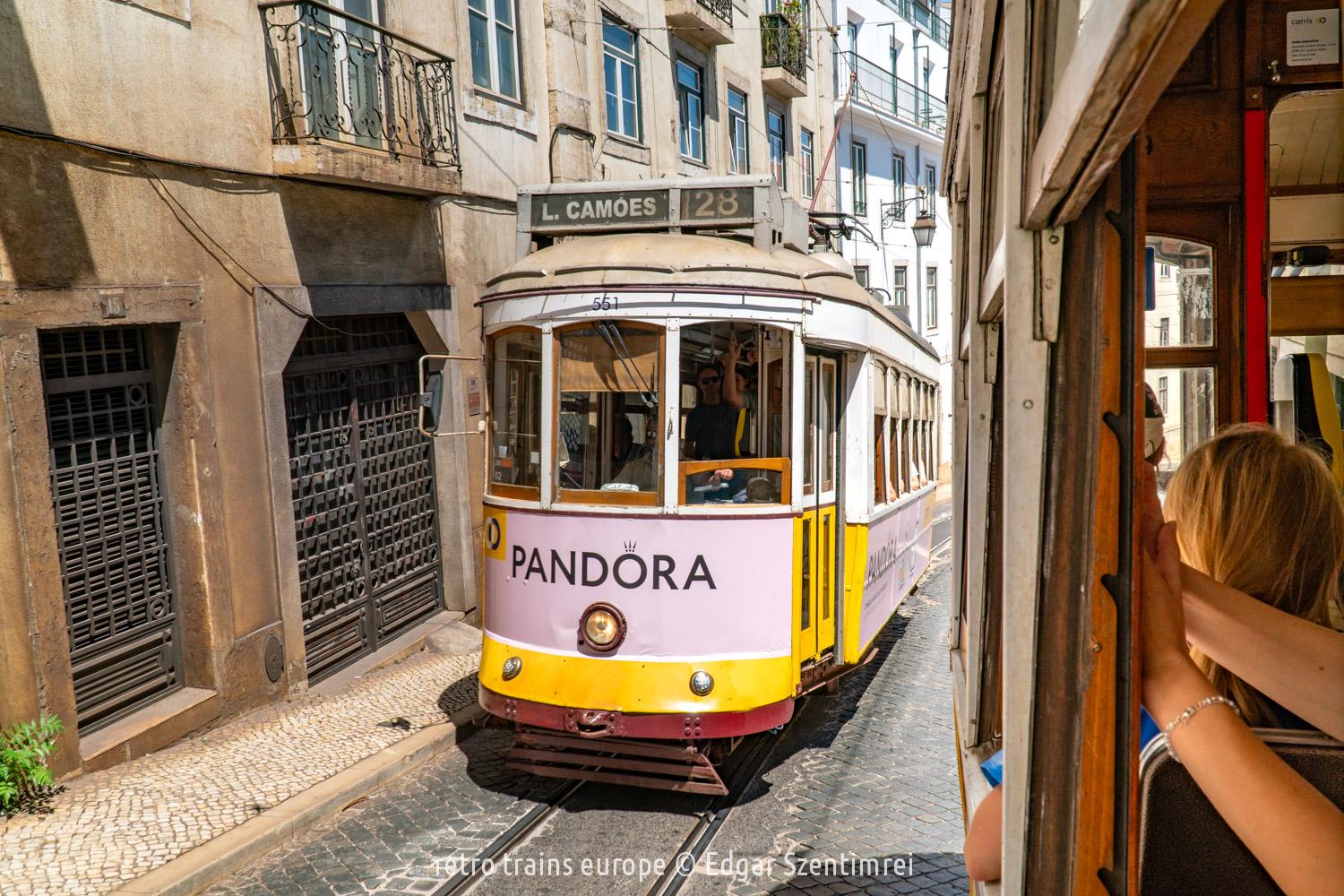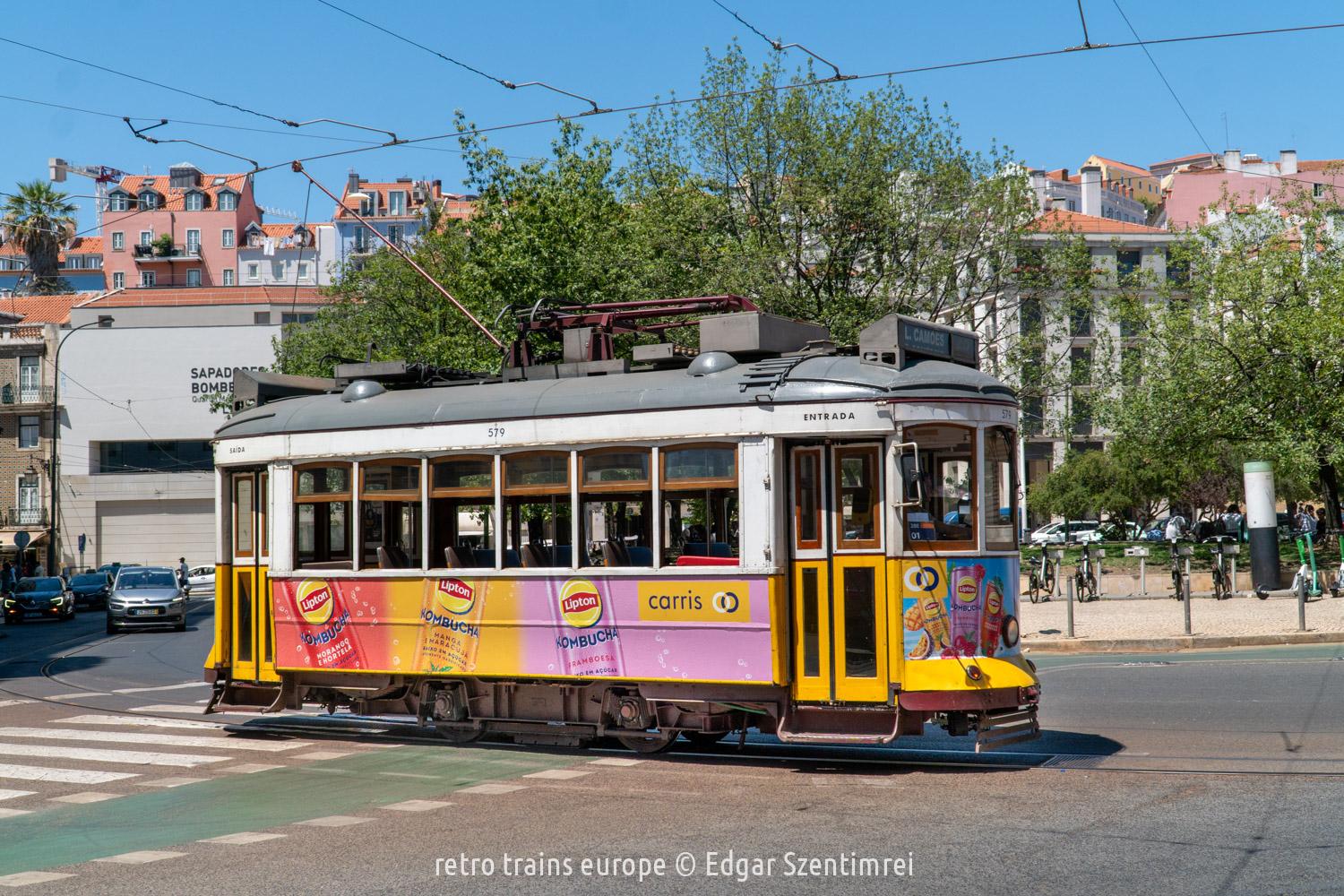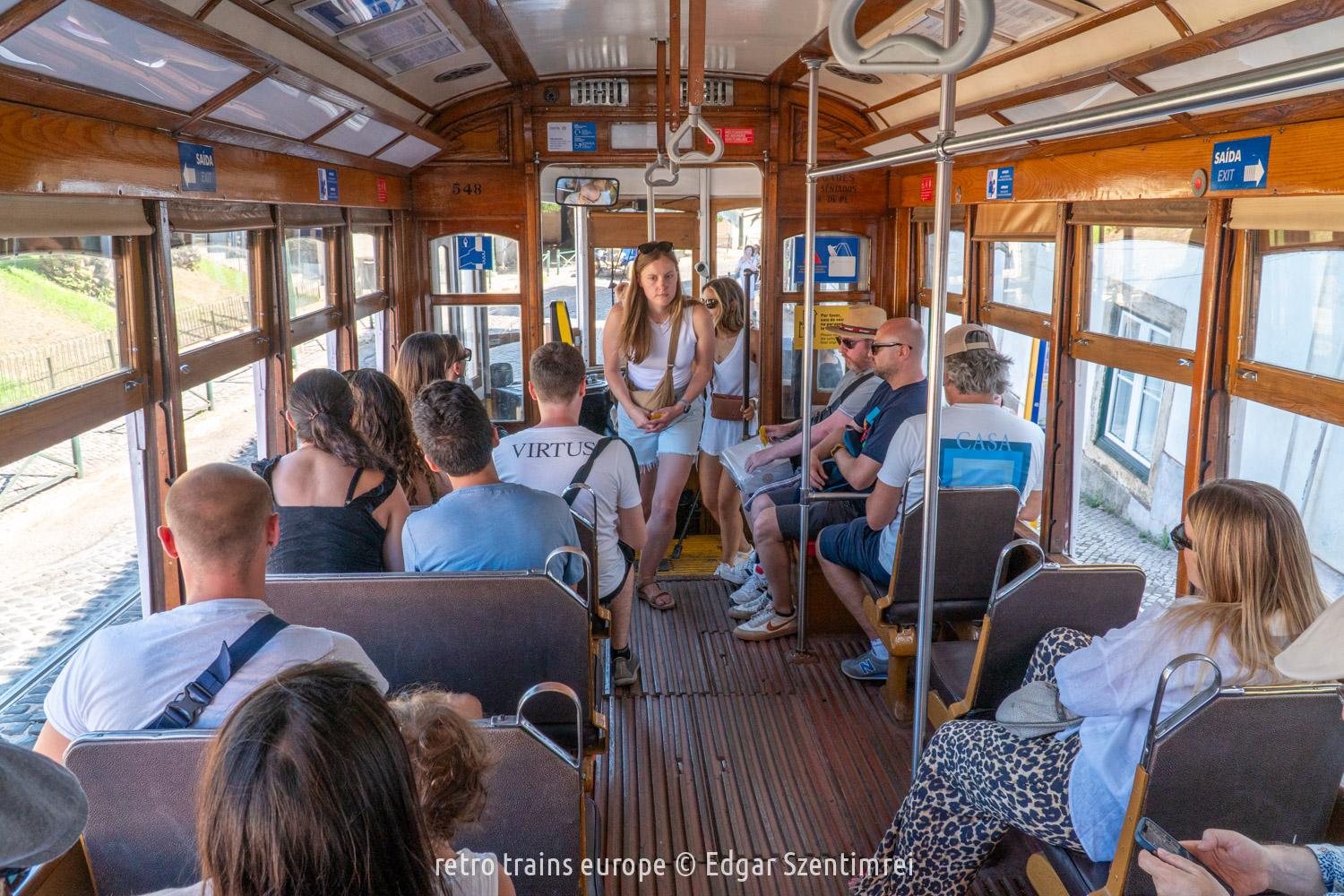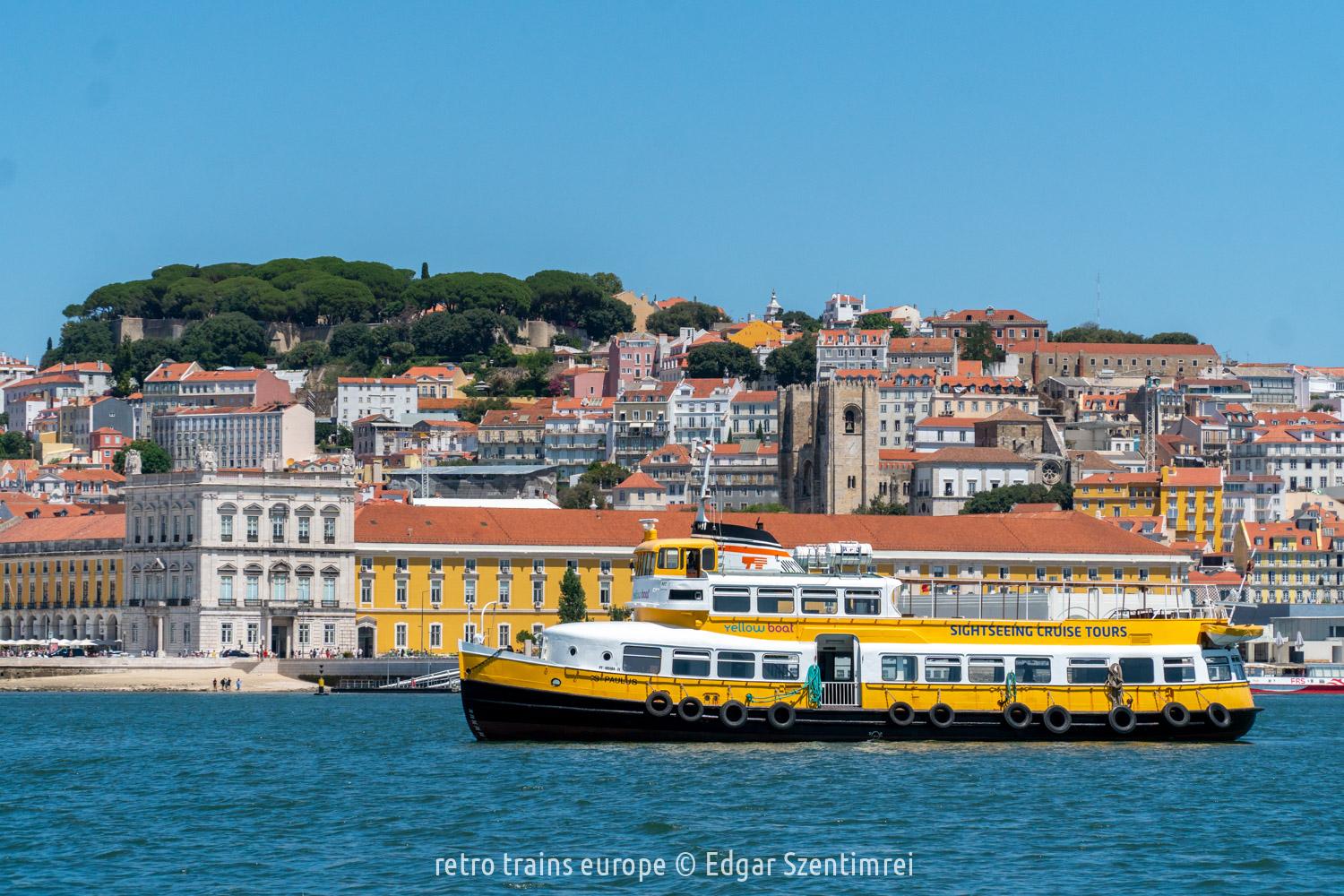Few cities in the world have trams so deeply ingrained in their street scenes as Lisbon. What makes this even better is that this isn’t just a tourist attraction – it's an essential mode of transportation, shaped by the city's unique circumstances and still holding onto the nostalgic atmosphere of its time. Today, Lisbon boasts an extensive metro system that carries hundreds of thousands of passengers every day, but in the narrow, winding streets and steep hills of the city, the tram remains irreplaceable. And judging by its continued popularity, why would it ever need to be? The little yellow trams smile at you from postcards, fridge magnets, and tote bags. The most famous of them all is the iconic 28, which travels between Prazeres Cemetery and Martim Moniz, with 32 stops along its 7.2-kilometer route. But it's not the only line where these classic trams can be found. And let's not forget the funiculars, which are also major tourist attractions. These are just fleeting glimpses of a city that can’t be fully understood without experiencing its tram culture – a story waiting to be told.
A hidden classic - This album is about the trams of Lisbon, but there’s something else worth mentioning. The boxy, faded-colored machine doesn’t immediately catch the eye, yet it belongs to a generation of diesel locomotives that are now celebrated by enthusiasts worldwide. The American ALCO DL535-S locomotives were built between 1957 and 1959 for Spain's national railway, but eighteen of them were later sent to Portugal, where they pulled freight trains until the late 1990s. Most of them were scrapped as electric locomotives took over their tasks, but one of the last survivors, locomotive number 1325, is still in use today by a Portuguese railway construction company. (Oeiras / Portugal, 02 August 2024, 15:42 WET)
The Heart of Chiado – The tram line 28 takes you through some of Lisbon’s most picturesque neighborhoods. While you can start your journey anywhere, it’s best to begin at the terminal, where you’ll have a better chance of getting a seat. Due to maintenance, the tram now turns back at Praça Luís de Camões, about two-thirds of the way, instead of continuing to the Prazeres Cemetery. (Lisbon, Praça Luís de Camões / Portugal, 5 August 2024, 13:30 WET)
Those Windows! – Many young people can’t even imagine what it’s like to travel with the train or tram windows down. Here, it’s all part of the experience, but it’s best not to lean out too far – the oncoming tram might just be a bit too close for comfort! (Lisbon, Calçada de Sao Francisco / Portugal, 5 August 2024, 13:59 WET)
Where the trams gather -- The tramway is mostly double-track, but there are also narrow, interlacing sections, and in the narrowest places there is even a single-track section with alternating directions. Here, traffic is controlled by a traffic light, and you have to wait for the tram in the opposite direction to pass. (Lisbon, Escolas Gerais / Portugal, 5 August 2024, 14:11 WET)
Stealing the style and the passengers -- The Ape Calessino 200, a three-wheeled miracle, is a world-famous icon in its own right. It's especially amusing how it cheekily steals the style and the passengers of the classic tram 28 — and honestly, it's hard to be mad at it for that. The same, however, can't be said for the Chinese electric T-model replicas, which really struggle to blend into Lisbon's style. (Lisbon, Praça Martim Moniz / Portugal, 5 August 2024, 14:27 WET)
No Bogeytram -- At the terminus, the tram rolls empty to the boarding area, where passengers are already lined up. The chassis stays always in the shadow, but a bit of photographic post-processing helps with the observation. It looks like a bogie, but of course, the car body doesn’t rotate above it, as it's securely welded in place. (Lisbon, Praça Martim Moniz / Portugal, 5 August 2024, 14:27 WET)
The little tram in the spotlight - As the sun prepares to set, its golden rays no longer penetrate the narrow streets of the city. Yet, the façades of the buildings, adorned with gleaming tiles, catch and reflect the fading light. Bouncing between the houses, the rays find their way down the street, illuminating the little tram as it rolls through the evening. (Lisbon, Rua Vitor Cordon / Portugal, 5 August 2024, 20:45 WET)
Not for safety enthusiasts – The tram tracks' smallest curve radius is 10 meters, but even this barely fits around the tight street corners, with the tram often extending well into the oncoming lane. The speed is quite low, so accidents are rarely fatal, but smaller collisions and loud swearing are frequent occurrences. (Lisbon, Rua Vitor Cordon / Portugal, 5 August 2024, 20:52 WET)
The best tram ever? - It’s rare to find a tram without advertisements. However, these aren’t bothersome, especially when the brand being advertised is so old that it could have appeared on the original Lisbon trams, too. The famous Coca-Cola logo was designed by Frank Mason Robinson in 1885. (Lisbon, Rua Vitor Cordon / Portugal, 5 August 2024, 20:52 WET)
Trams without drama - The trams of line 24 run between Camões and Campolide, following a less dramatic route compared to trams 12 or 28. As a result, it doesn’t attract large crowds of tourists, often departing from the terminal with very few passengers. It’s a great choice for those wanting to experience the authentic atmosphere of Lisbon’s trams. Similar tram lines have disappeared in recent decades, making this route even more special. (Lisbon, Praça Luís de Camões / Portugal, 6 August 2024, 12:12 WET)
Yellow and classic, like the trams - The final image of the album also features a mode of transportation, but this time it doesn't run on tracks; it moves on water. The ship was built in 1959 by the SCHEEL & JOHNK shipyard in Hamburg and was used as a passenger ferry and excursion boat in the Hamburg harbor and the lower section of the Elbe River until 1996. Originally named Sülldorf, it was later renamed St. Pauli, and eventually St. Paulus. It used to be an iconic part of the Hamburg harbor scene, but now it belongs to Lisbon. (Lisbon, Rio Tejo, 6 August 2024, 14:10 WET)
